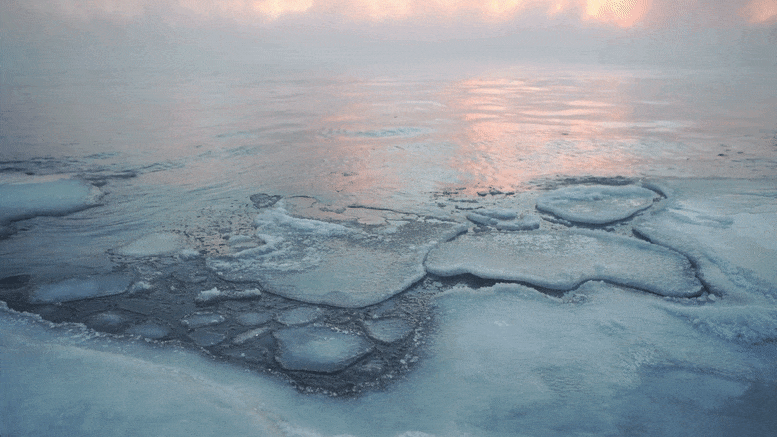
New research predicts that Arctic sea ice could vanish between 2030 and 2050, earlier than IPCC forecasts, even if greenhouse gas emissions are reduced. The study emphasizes that ice depletion is primarily due to human-caused emissions and will have global consequences, including more frequent extreme weather events.
If global greenhouse gas emissions continue to rise at the current rate, the Arctic could lose all its sea ice by the 2030s. Cutting emissions could delay this event until the 2050s at best. This estimate is ten years earlier than the Intergovernmental Panel on Climate Change (IPCC) has previously forecasted: an ice-free Arctic by the 2040s.
A possible ice-free Arctic in the 2030-2050s was projected regardless of humanity’s efforts to reduce its greenhouse gas emissions by Professor Seung-Ki Min and Research Professor Yeon-Hee Kim from the Division of Environmental Science and Engineering at Pohang University of Science and Technology (POSTECH) and a joint team of researchers from the Environment Climate Change Canada and Universität Hamburg, Germany. The research was published in the international journal, Nature Communications.
The term global warming has become a household name since it was first used by a climate scientist at NASA in 1988. The Earth has seen a rapid decline in the Arctic sea ice area as its temperature has increased over the past several decades. This reduction in Arctic sea ice has induced the acceleration of Arctic warming, which is suggested to contribute to the increased frequency of extreme weather events in mid-latitude regions.
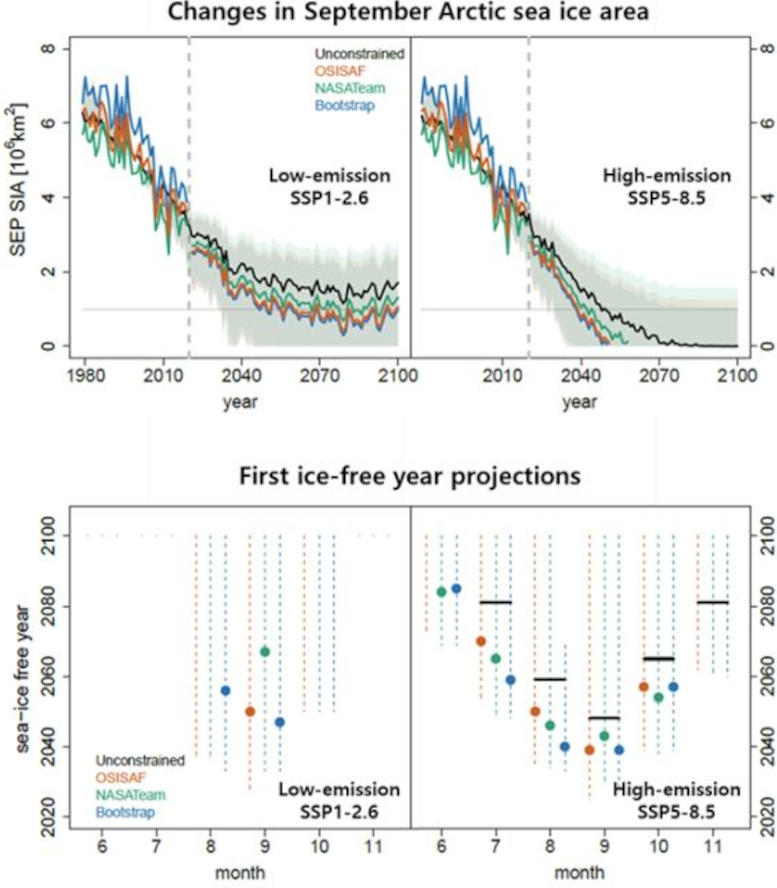
Black line (unconstrained): Raw model projections – Red, Blue, Green lines: Model predictions constrained by three observed datasets. The results predict that all of Arctic sea ice will disappear in the 2030s if increases in greenhouse gas emissions remain at the current rate, and even with emission reduction, it will eventually disappear during the 2050s. Credit: POSTECH
To predict the timing of Arctic sea ice depletion, the research team analyzed 41 years of data from 1979 to 2019. By comparing the results of multiple model simulations with three satellite observational datasets, it was confirmed that the primary cause of the decline is attributed to ‘man-made greenhouse gas emissions’. Greenhouse gas emissions resulting from human fossil fuel combustion and deforestation have been the primary drivers of Arctic sea ice decline over the past 41 years, while the influence of aerosols, solar, and volcanic activities has been found to be minimal. Monthly analysis found that increased greenhouse gas emissions were reducing Arctic sea ice all year round, regardless of season or timing, although September exhibited the smallest extent of sea ice reduction.
Furthermore, it was revealed that climate models used in previous IPCC predictions generally underestimated the declining trend of sea ice area, which was taken into account to adjust the simulation values for future predictions. The results showed accelerated decline rates across all scenarios, most importantly confirming that Arctic sea ice could completely disappear by the 2050s even with reductions in greenhouse gas emissions. This finding highlights for the first time that the extinction of Arctic sea ice is possible irrespective of achieving ‘carbon neutrality.’
The accelerated decline of Arctic sea ice, faster than previously anticipated, is expected to have significant impacts not only on the Arctic region but also on human societies and ecosystems worldwide. The reduction of sea ice can result in more frequent occurrences of extreme weather events such as severe cold waves, heat waves, and heavy rainfalls all across the globe, with the thawing of the Siberian permafrost in the Arctic region possibly intensifying global warming further. We may witness terrifying scenarios, which we have seen only in disaster movies, unfold right before our eyes.
Professor Seung-Ki Min, who led the study, explained, “We have confirmed an even faster timing of Arctic sea ice depletion than previous IPCC predictions after scaling model simulations based on observational data.” He added, “We need to be vigilant about the potential disappearance of Arctic sea ice, regardless of carbon neutrality policies.” He also expressed the importance of “evaluating the various climate change impacts resulting from the disappearance of Arctic sea ice and developing adaptation measures alongside carbon emission reduction policies.”
Reference: “Observationally-constrained projections of an ice-free Arctic even under a low emission scenario” by Yeon-Hee Kim, Seung-Ki Min, Nathan P. Gillett, Dirk Notz, and Elizaveta Malinina, 6 June 2023, Nature Communications.
DOI: 10.1038/s41467-023-38511-8
The study was funded by the National Research Foundation of Korea (Mid-Career Researcher program).


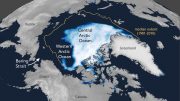

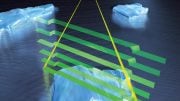
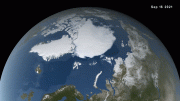
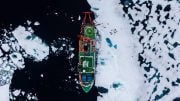
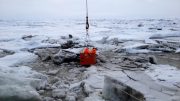
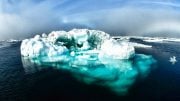
“If global greenhouse gas emissions continue to rise at the current rate, the Arctic could lose all its sea ice by the 2030s.”
This is not the first time, nor probably the last, that we have heard predictions like this. The SSP5-8.5 scenario, which was originally characterized as “business as usual,” is generally considered improbable. Despite the COVID lock-downs of 2020, where the average annual decrease in anthro’ emissions was 10%, and April saw a decline of 14-18%, there was no measurable change in the seasonal rate of CO2 increase, nor the seasonal peak in May; the seasonal curve was indistinguishable from 2019 and 2021. 2020 was tied with 2016 for the hottest year on record.
“This estimate is ten years earlier than the Intergovernmental Panel on Climate Change (IPCC) has previously forecasted: an ice-free Arctic by the 2040s.”
Yet, until July of this El Nino year, we had gone 8 years and 10 months without any statistically significant warming in the troposphere.
What’s wrong with this picture?
What wrong with your picture is that you selectively take periods which match your objective. Just like flat earthers.
Climate systems are chaotic and will oscillate around a mean or trend rate. So don’t selectively take 8 years and 10 months just because it fits your logic – take the last 50 years or even 100 and explain that. Take CO2 at 420ppm and compare it to the last 1 million years.
Also, please support your statement that SSP5-8.5 is considered improbable? Why and by who?
The “flat earthers” insult was not warranted.
An examination of the global temperature time-series shows it to be a step-function with years of relatively little change, and then a jump (usually El Nino events). Extrapolating a step function, when the start or length of the plateaus cannot be predicted, is fraught with problems.
I have not ‘selected’ any periods. The approach taken by Monckton (2023), to define the current plateau, is to work back from the current month, calculating the trend. The start date is defined as the month following the first month which produces a statistically significant trend.
Why stop at “the last 50 years or even 100?” Equilibration times are probably much greater than that. If all the available paleo-temperature proxy data is used, there is poor correlation with CO2.
Have you looked at the Vostok ice core temperature/CO2 data?
Following is a short introduction to the issue with RCP-8.5, and its derivatives, with additional sources mentioned:
https://judithcurry.com/2018/11/24/is-rcp8-5-an-impossible-scenario/
Note that the article is predicting all the Arctic ice to disappear in about a decade. If, as commonly happens, we get another temperature plateau after this El Nino, it is unlikely that the temperature will have increased sufficiently in a decade to match the linear extrapolation. Also, the ice does not melt in direct proportion to the average temperature because the phase change is a threshold (0 deg C) that has to be crossed. The area of melting is a function of the percentage of ice exposed to temperatures above 0 deg C.
What? CO2 is plant food, it makes the planet greener. ‘Climate change’ is pure Bull Sh#t and it is put into the heads of the brainwashed masses by brainwashed people like you. After the upcoming fake WWIII, most of the brainwashed people will escape their Khazarian Deep State Matrix. You think I’m insane, I’m sure, however this comment is meant to re-inforce the lessons you will soon start learning.
“This reduction in Arctic sea ice has INDUCED the acceleration of Arctic warming, …”
I think that it is more likely that CO2 is more effective when the air is very dry, as it is in the Arctic. People should be looking at the various Köppen climate groups to see if the Sahara and Atacama deserts are similarly showing anomalous warming. To date, all I have seen are breakouts by political boundaries rather than by similar vegetation-precipitation zones.
You can “prove” any hypothesis, using modelling – as we have learned to our cost not only with climate change but also the never-ending COVID shamdemic. Time to wake up and smell the ruses.